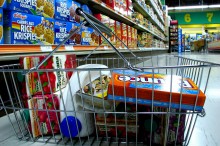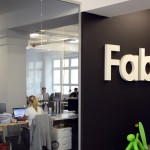choose Seeks more Financing whereas finding role in supply carrier boom

four years in the past, when many New Yorkers felt left in the chilly through a slow snow fall response from Mayor Mike Bloomberg, Saturday night live roasted the bureaucrat by having his caricature casually counsel these trapped at home must pick up a phone to call an area restaurant for delivery.
pick up a cellphone? name a restaurant? How instances have modified.
whereas web-based supply firms akin to Seamless and GrubHub had been around for years, app-focused ordering services and products from want to Instacart to Drizly are doping up, and expanding all of a sudden. My colleague Michael Davidson said on how Drizly, a startup that promises booze of all types, had an important day Monday as Bostonians stockpiled for any other anticipated storm. Grocery delivery carrier Instacart benefited, too, simply weeks after it landed a $ 2 billion valuation from an enormous fundraising round. the company now has brought its delivery app to fifteen cities since it was once founded in 2012.
choose, which relocated to Austin, TX, in 2013 after being launched previous that year in California, is hoping to be the next large name in supply. It can pay “runners” to deliver meals or groceries from any retailer or restaurant inside of its provider zone on the whim of the app’s user.
want is within the means of elevating a new spherical of funding, to apply its $ 2 million of seed financing in September, in keeping with cofounder Zac Maurais. the company extended its offerings to Houston last week, after it brought Dallas in November and Boston remaining summer.
completing that subsequent fundraising round will let want tack on extra cities in 2015, said Maurais, the corporate’s chief advertising officer. he’s conserving quiet on exact objectives, though the collection of delivery runners—the contractors favor hires to pick up and bring you no matter you desire—will raise to “several thousand” this yr from about seven-hundred presently, Maurais mentioned.
“for every stage of the startup trip, you’re at all times like conserving on, announcing to yourself, ‘Oh crap, we’re rising so fast,’” he said. “then you definitely get to the next stage and say, ‘Wait, that used to be nothing.’”
the place prefer differs from other apps is that its essence is framed around impulse buys. Instacart permits you to nearly stroll the aisles of a grocery retailer, and seize objects you might want delivered as you see them, as Xconomy’s Curt Woodward skilled firsthand. favor, meanwhile, means that you can title the meals or grocery merchandise you might be craving, in addition to the store you might want it from. Its runners then are seeking it out and deliver it. They stay in contact by way of text message, too, in case something isn’t available.
prefer charges a price for the delivery of $ 5 to $ 6, plus a share of the whole order. Instacart additionally costs charges of about $ 4 to $ 6, and it marks up the cost of the objects listed on its web site compared with what’s in the retailer. And there’s additionally the tip on your supply particular person.
The rather impressive T-shirts prefer supply runners wear, a mild blue with the picture of a tuxedo on the front, are a standard sight in Austin.
as it expands, want is altering the way in which it gifts meals choices, Maurais stated. while looking for a specific merchandise has traditionally been the main manner, the corporate is now presenting sure restaurants on the app. desire takes a share of the gross sales that the corporate drives to the restaurant on account of the app, Maurais said, much like what Seamless or GrubHub do.
“It’s more or less a traditional factor that Seamless does, but with Seamless which you could most effective get issues from Seamless menus,” he said. With prefer, that you may get any item you need so long as the store or restaurant is within the supply zone—aside from alcohol, which the corporate doesn’t ship to steer clear of dealing with state laws, Maurais mentioned. favor can also be including more photographs to the app as a result of gadgets with photos attached had eighty p.c extra visitors, he mentioned.
GrubHub Inc. (NYSE: GRUB), which owns Seamless and GrubHub, has Maurais feeling relaxed that the supply boom isn’t a bubble. the corporate estimated that americans spent $ sixty seven billion on takeout in 2012 and 2013; GrubHub Inc.’s sales totaled $ 1.3 billion for the 9 months that ended Sept. 30, 2014, according to a regulatory filing.
“With them handiest doing $ 2 billion out of $ 70, that’s a huge possibility within the meals delivery market,” Maurais stated. “outdoor of the domestic market, in the end we’ll need to transform a player internationally.”
the possible measurement of the market manner there’s room for want’s competitors, too. at least, Maurais doesn’t appear serious about losing trade to Instacart. He admires the corporate for the way in which it constructed up the app itself, as well as its presence in so many cities.
“i take advantage of Instacart myself,” Maurais said. “totally on the weekend.”
(148)













